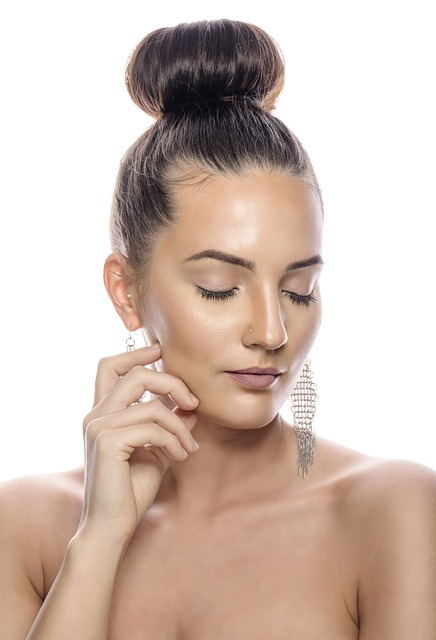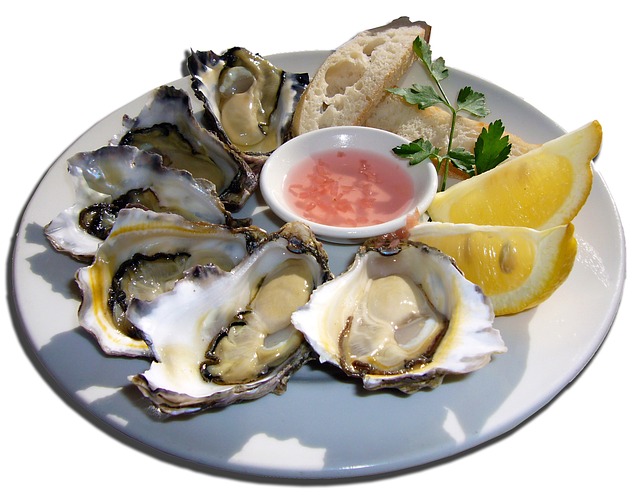Learn more about the foods to consume for glowing skin and how to prepare them creatively.
Perhaps you’ve heard that ‘you are what you eat’ or that what you eat regularly has an impact on your exterior appearance as well as your inside health. And, if so, what is the best diet for clear, bright skin? The truth is that there are no single or even numerous excellent foods for bright skin.
There are, however, meals high in particular nutrients that may promote glowing, vibrant skin. In reality, because the skin is the largest organ in the human body and serves as a barrier between the body and its surroundings, it is critical to nourish it with a range of nutrients through food.
Every 40 to 56 days, you develop completely new skin, and the building blocks for that new skin come from the foods you consume. So, if you desire healthy skin, one of the most important factors is the quality of your nutrition. So, what exactly is ‘good skin’? Healthy skin is well-hydrated and has a barrier against microorganisms. Applying sunscreen, properly washing, and following a skincare routine all contribute to healthy skin, but so can your food.
You might spend a fortune on cosmetics while ignoring the fact that food is an important component of skin health. Glowing implies glowing, radiant, and luxuriant skin, and there are tasty, nutrient-dense ways to reach this goal.

What Foods Promote Glowing Skin?
Nutrition can have a variety of effects on the skin. Hormone levels alter with age, collagen levels fall, and the rate of skin repair and renewal slows. Aging may progress depending on your exposure to sunshine, increasing the number of reactive oxygen species, decreasing hyaluronic acid production, and raising inflammation.
Choosing foods rich in key nutrients is critical for maintaining good skin health. Here are eight nutrient-dense foods that have been shown in studies to benefit skin health.
Cucumbers
Hydration is the key to glowing skin. Water consumption is essential since the skin is a direct reflection of the level of moisture in your body. Foods high in water content are a great way to ‘eat your water.’ Cucumbers are a great example because they are 95% water.
Consuming hydrating fruits and vegetables, such as cucumber, is a wonderful approach to increasing your overall hydration levels and promoting radiant skin. Have your chapped lips or dull skin? Increasing water use is likely to reverse this trend. Indeed, research suggests that drinking more water (the study recommended 2 liters each day) may enhance skin physiology. Simply said, drinking more water helps to hydrate the skin.
Other water-rich choices include Cantaloupe, watermelon, and lettuce.
Oysters
Oysters are high in zinc and other trace minerals (iron, selenium, copper, and so on) that the body needs in small amounts. These little yet powerful minerals are essential for boosting immunity and combating inflammation.
Zinc is required for the skin’s defense against infection and to facilitate wound healing. Oysters have the highest zinc content per serving of any cuisine.
Other trace minerals also have skin-protective properties. Copper can increase skin suppleness and wrinkle reduction. However, a selenium deficit might make the skin more vulnerable to oxidative stress.
Nuts and seeds, lentils, and beans are also high in trace minerals.
Avocados
Lipids (also known as fats) are an important component of skin that help to maintain barrier function and membrane integrity, promote repair, and prevent aging. Avocado is a great healthy fat-containing food for skin health.
Avocados are high in monounsaturated fats, as well as vitamins A and C, which are important for maintaining strong tissues and promoting skin moisture.
In one short trial, 39 ladies were randomly allocated for eating one avocado every day for one group, and the other group continued with their regular diet. The study concluded that eating avocados on a daily basis may improve the suppleness and firmness of facial skin.
Other healthy fat sources include nuts and seeds, olive oil, and fatty seafood.
Salmon
Fatty acids, such as omega-3s, can also lower inflammation and protect against aging. Salmon, which includes skin-boosting omega-3 fatty acids as well as protein, is an excellent food for promoting glowing skin.
Fish and foods that are rich in omega-3 help preserve collagen and keep skin younger and firm. These omega-3 fatty acids are not only good for your skin, but they are good for your heart, as well.
Walnuts, chia seeds, and flaxseeds are also high in omega-3 fatty acids.
Bones Broth
Although bone broth is a trendy beverage, it is high in amino acids (protein building blocks) and collagen. Protein serves numerous functions in the body. As the skin is always in a cycle of renewal, one of its most vital responsibilities is to develop and repair tissues. Consuming adequate protein is essential for the body to maintain the amino acid pool required to keep this cycle continuing.
All types of protein contribute amino acids, but there is one type of protein that is particularly important for skin health. Collagen is abundant in the human body. Collagen supports the structural integrity of your skin, cartilage, tendons, bones, and connective tissue.
Some data suggest that collagen supplements may provide anti-aging advantages such as wrinkle reduction, increased skin suppleness, and decreased dryness.
Other protein-rich foods include eggs, lentils, and almonds.
Walnuts
Walnuts are a skin-healthy powerhouse, with plenty of protein, healthy fat, and vitamin E. Walnuts include gamma-tocopherol, a kind of vitamin E that has been demonstrated to assist skin regeneration and prevent skin damage. The delectable nut also contains a lot of omega-3s, which is ideal for people who don’t enjoy fatty seafood.
Sunflower seeds, almonds, and spinach are also high in vitamin E.
Strawberries
Blueberries and strawberries are high in antioxidants. Antioxidants accomplish what their name implies: they combat oxidation. To put it simply, oxidation causes the skin to age. Many cosmetics contain antioxidants like vitamin E and vitamin C that you can apply directly to your skin, but diet can also operate in the same manner.
Vitamin C promotes collagen formation and reduces the effects of free radicals, assisting in the maintenance of firm and youthful skin. Strawberries provide vitamin C and fiber, a nutrient most of us don’t get enough of.
Antioxidant-rich foods are also quite important in ensuring that you receive the benefits of these oxidation fighters both inside and out. According to some research, strawberries can help minimize U.V. damage and inflammation.
Raspberries, Brussels sprouts, and tomatoes are also high in antioxidants.
Red bell peppers
When it comes to vitamin C-rich foods, oranges are the most commonly mentioned. One 1/2 cup portion of red peppers, on the other hand, has 106 percent of the daily recommended dose of vitamin C, but one medium orange contains only 78 percent.
Collagen formation, protein metabolism, and wound healing all require vitamin C. It also functions as an antioxidant, combating free radicals and decreasing inflammation for youthful and luminous complexion.
Oranges, broccoli, and kiwi are also high in vitamin C.
How to Add Skin-Healthy Foods to Your Diet
Including these nutrient-dense food groups in your diet can be simple and delightful. There are numerous sources for each vitamin, so you can select options that you enjoy while also meeting your nutritional requirements.
Among the suggestions are the following:
Salads: Include water-rich fruits and vegetables in your salads, such as citrus fruits, lettuce, and cucumber. Avocado and salmon are good sources of omega-3 fatty acids. A handful of almonds will boost the protein content.
Smoothies: Combine components from each area to make a glowing-skin smoothie, such as antioxidant-rich berries, hydrating greens, protein and mineral-dense almonds, and your favorite protein source.
Snacks: Choose a protein, fiber, and fat combination to increase satiety between meals while also benefiting your skin. Combine walnuts, goji berries, and coconut flakes with nuts and dried fruit. Dip vitamin-C-rich red pepper slices in guacamole for a tasty delight.
If you require specialized meal ideas or assistance, consider visiting a physician or nutritionist for a personalized recommendation.
NOTE: Many of these items might be pricey, so it’s usually a good idea to use frozen or canned options wherever possible. While this is an investment, the benefits of these meals extend far beyond the skin. They’re great for illness prevention, digestion, and overall health.
Foods to Avoid for Beautiful and Glowing Skin
Unless you have certain restrictions or allergies, all foods can be included in a healthy, balanced diet. However, there are some foods and cooking methods that may be harmful to your skin.
These are some examples:
- Foods that have been fried
- fatty meat cuts (ribs, bacon, etc.)
- Foods heavy in sugar and extensively processed
- Sodium-rich foods (processed meats)
- Sweeteners made from artificial ingredients
Some meals, such as dairy products and soy-containing foods, are also regarded to be harmful to skin health, but research is mixed. It’s questionable whether certain foods truly harm the skin versus anecdotal evidence from those who experience discomfort, but some people have shown that dairy milk causes acne. If this is the case for you, it’s a simple fix to replace dairy with plant-based milk, like almond milk. If soy-containing goods appear to wreak havoc on your skin, pay close attention to the ingredient labels of packaged meals.

Tobacco and alcohol are the other two items to avoid. These compounds dehydrate the skin and may speed up the aging process.
To Conclude
The bottom line is that including these foods in your diet may promote healthy, bright skin; nevertheless, skin health is affected by a variety of factors.
Sure, a healthy diet is important, but you should also consider your sleep, exercise, stress management, and hydration. You should also prioritize drinking lots of water, looking into stress management strategies, and getting adequate sleep if you want bright, vibrant skin.


